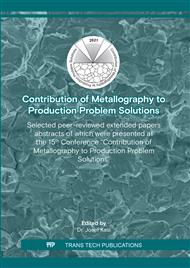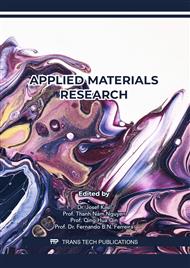p.113
p.119
p.127
p.133
p.139
p.147
p.157
p.163
p.171
Analysis of Cracked Rail of the Crane of Type A120
Abstract:
The aim of the work was to find out the causes of cracking of the A120 crane track rail. Although the track was regularly inspected by defectoscopic techniques, after five years of operation, the rail was broken at the weldment. The elemental composition of the welded joint materials was verified and the mechanical properties were determined. A fractographic description of the fracture surface was performed and the structure of the material was evaluated. Several factors contributed to the formation of crack, the combination of which led to a rail failure. Defects of the welded joint, acting as notches, from which they initiated fatigue cracks, unfavourable microstructure of the weld metal, low toughness of the base material and operating environment and conditions were dominant.
Info:
Periodical:
Pages:
139-146
Citation:
Online since:
June 2022
Authors:
Keywords:
Price:
Сopyright:
© 2022 Trans Tech Publications Ltd. All Rights Reserved
Share:
Citation:



